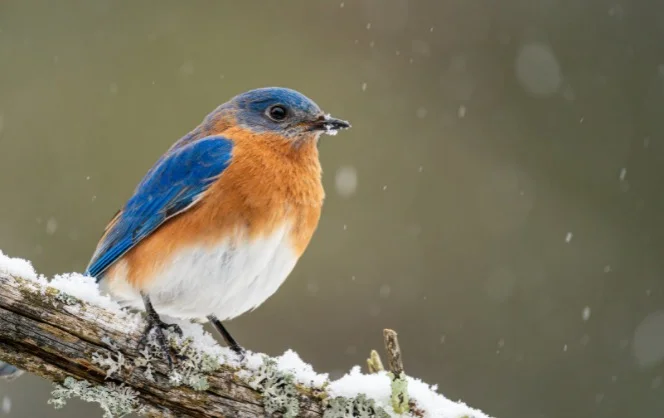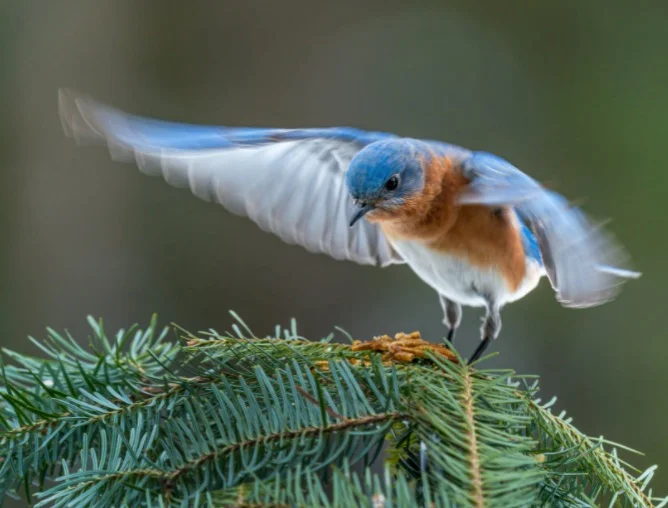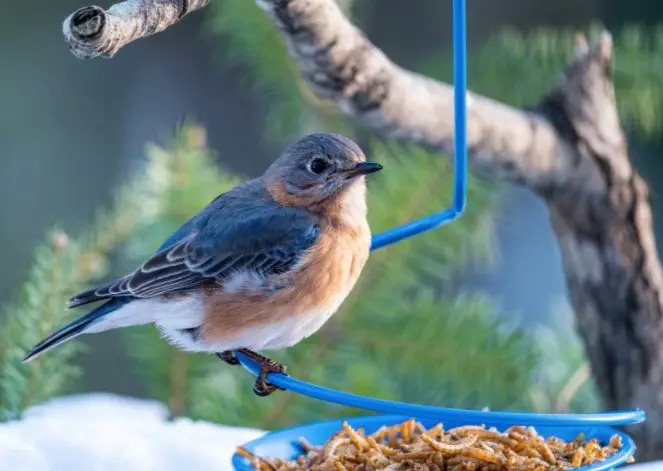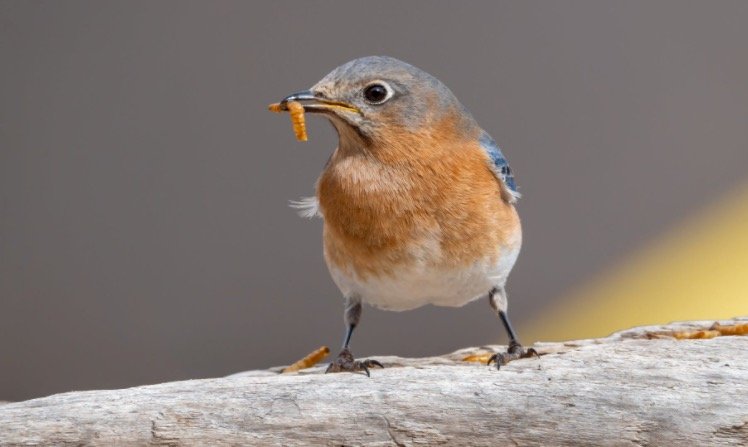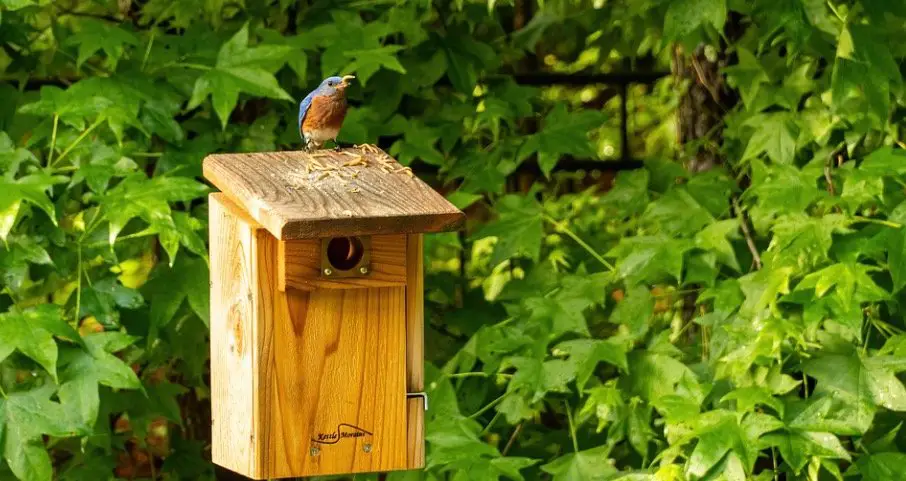Missouri State Bird: Description, Pictures, & Fun Facts
Missouri State Bird
Missouri is the 21st-largest state in terms of land area and the 19th-most population. It is well-known for its varied landscapes, which attract a wide range of species. Missouri’s official mammal is the Missouri Mule, but what is the Missouri state bird?
In 1927, Missouri designated the Eastern Bluebird (Sialia sialis) as its state bird. The bird, whose numbers had plummeted in the 1950s, now nests in nesting boxes throughout the state. The little songbird is well-known for its melodic abilities.
Why is Eastern Bluebird Missouri State Bird?
The Eastern Bluebird was chosen as Missouri’s state bird because it is “common in Missouri” and serves as a “symbol of pleasure” with its joyful singing. The bluebird, as naturalist Henry David Thoreau put it, “carries the sky on its back.”
The state is so fond of the bluebird that it has erected birdhouses for it at regular intervals across the terrain. In the spring, you’ll see the bird fluttering from one fencepost to the next and hear its “cheer-cheery up” song as you drive through Missouri’s countryside.
When did Eastern Bluebird become Missouri State Bird?
On March 30, 1927, the Missouri legislature approved legislation designating the Eastern Bluebird as the official bird of Missouri. In addition, the Eastern Bluebird is the official bird of New York.
What does Missouri State Bird look like?
The Eastern bluebird normally develops to be six to seven inches long from head to tail. Its upper body is covered in a light blue, glossy plumage, while its breast downy is cinnamon red in spring and summer and rusty in fall.
On the female, the feathers have a leaden colour on the upper body but a yellow-brown tint on the neck and sides. Their colour is duller in this region than on the male. Their stomach is completely white.
Their beak and foot are also black. The bluebird has a wing span of 10 inches. These birds are roughly the same size as other songbirds, weighing between 0.84 and 1.09 ounces.
How do Missouri State Bird behave?
From early April through late November, the migratory eastern bluebird may be seen in Missouri. It likes to live in rural environments, such as meadows, wide fields, and huge yards. The sings a joyful tune on a regular basis.
They are non-aggressive under normal conditions. Instead of making a new nest, these ingenious birds often nest in existing woodpecker holes. They favour those found in dead oak, pine, or other trees.
While most birds build their nests on the ground or up to 10 feet in the air, the bluebird chooses the forest’s penthouse flat and builds its home approximately 50 feet in the air.
When the Eastern Bluebird begins its breeding season, it gets aggressive. If other birds approach, it will attack them. This includes birds that are considerably bigger than themselves, such as hens and roosters. In March, bluebird couples begin their courting.
A sweet, caring wooing is part of their March craziness. The guy sings to and woos his future partner with different masculine gestures. He’ll flutter ahead of her, wings stretched and tail feathers spread.
They will perch close to one other and preen each other’s feathers. The male will provide food for the female. When the chicks are hatched, both parents go out to seek for food for them. They bring the chicks‘ food.
If the parents have additional broods that are still at home, these older chicks will assist feed the hatchlings as well. They reach the fledgling stage at about 18 to 19 days and leave the nest on their own.
Do Eastern Bluebirds form communities?
When it comes time to have a kid, the monogamous Eastern Bluebird couples change from gregarious to anti-social. The Bluebird usually flies in a flock of around 100 other birds, but when it falls in love, the pair separates.
If you encounter these birds in various states, you’ll notice that they breed at different times of the year depending on where you are. For example, they breed in January in Florida, mid-April in Pennsylvania, and June in Maine, whereas the Missouri bluebird breeds in March.
The female leads the construction of the nest. They look for a nesting box or a suitable hole. When the female breeds, she produces four to six light blue eggs. These affectionate birds breed twice or three times a year and rear two or three broods that year.
The male is in charge of the first nest with its babies, while the female is in charge of the second clutch of eggs.
What do Eastern Bluebirds eat?
Bluebirds hunt for food on the ground, eating insects, fruits, and seeds. Caterpillars, spiders, Coleoptera, and other insects are among the bluebirds’ favourite diets. When foraging for insects, the bird perches on the bark of trees.
Many of the insects they consume are helpful to farmers, since they would otherwise destroy crops. These birds will eat huge fruits that you would not often connect with a little bird. Although their preference for grapes seems to be proportionate to their size, the bluebird will also consume the considerably bigger fruits of figs and persimmons.
Throughout the autumn, they consume a meaty diet of grasshoppers in the vicinity. During the winter and spring, they may seem to follow a farmer about, but it is the area the farmer ploughs that the bird is interested in, not the farmer himself.
The bird allows the farmer to conduct the labour of turning the dirt, which exposes a variety of insects. Although the birds have favourites, they will eat any insects buried by the plough.

